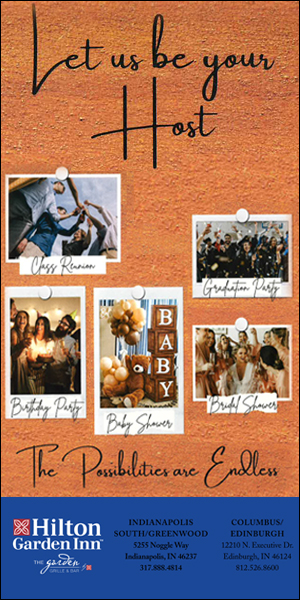
Pantone’s new hue is Very Peri
By Rebecca Berfanger
Each year, the Pantone Color Institute, a global color trends forecaster, designates a color of the year. In late 2021, the New Jersey-based color company named its color for 2022: Pantone 17-3938, better known as Very Peri. It is a new creation, and its designation as color of the year marks a first for Pantone.
“The Pantone Color of the Year reflects what is taking place in our global culture, expressing what people are looking for that color can hope to answer,” says Pantone Color Institute Vice President Laurie Pressman, in a statement. “As society continues to recognize color as a critical form of communication, and a way to express and affect ideas and emotions and engage and connect, the complexity of this new red-violet-infused blue hue highlights the expansive possibilities that lay before us.”
For such a young color, Very Peri already has plenty of admirers.
“It’s a very pretty color; it’s a soothing blue and has energy of the red pulled into it,” says Christina Fletcher, owner of the Franklin boutique Possibilities: Home Re-Imagined.
It’s a color Fletcher expects to see in a variety of homes, in a range of places: home decor accent pieces, fashion and digital design. She plans to paint a couple of end tables using this color, whether it will be for customers looking to add this specific pop of color, or as accent pieces to be used to display items by the more than 40 vendors — all local and family businesses — she carries.
Another local shop that is incorporating its take on Very Peri is BYTAVI, a fair-trade clothing and handbag line with a boutique in Franklin. BYTAVI brand manager Lindsey Cangany says the team establishes its color story two years in advance; decisions are made after thorough reviews of Pantone’s fashion colors and high-fashion trends. Before the Very Peri announcement, the team already had a muted version of the color on deck for the 2022 line, which is now available at the shop or online.
And of Very Peri? Cangany is a fan.
“I think it’s beautiful,” she says. “It’s blue and purple, bright but calming. It’s definitely a color we can incorporate into our line.”
“Our brand is a little more neutral, muted tones, nothing super bright,” Cangany says. “For purple this year, we have some softer hues of that purple incorporated into our line.”
Very Peri might also pop up in floral arrangements, but it might not be exactly this same color, says Karen Morgason, senior wedding designer at JP Parker Flowers in Franklin.
Although Morgason has yet to have a bride ask specifically for Very Peri since the color was announced, she says she wouldn’t be surprised if it or a version of it came up from clients who tend to use Pinterest or Instagram and other social media sites to find inspiration for their own wedding colors.
“Periwinkle blue is not the easiest color to match as far as colors that occur in nature, but it’s fun to use as an inspiration,” Morgason says. Close matches would include cornflower, bachelor’s button, light blue delphinium and hydrangeas, but they could also use purple- and blue-hued ribbons or other accents.
Although it may be easy to adjust a color palette for retailers, fine artists share a different take on this year’s color and Pantone colors in general. For local plein air painter Donna Shortt, there is “something in (periwinkle) that makes me happy about it. It is my favorite color. Shortt, who works in pastels and oil paints, often incorporates periwinkle into landscapes and still-life paintings.
“It’s a good color to show distance. It’s a little bit blue and a little bit purple. It offers a contrast to the warm colors in the foreground that depict sunlight and warmth,” she says. The pastel purple blue often appears in her work in various shades to depict sunrises, bright blue skies, glittering snowscapes and where the light hits, just so, on the side of a building.
“But I don’t really think about purposely using it just because it’s in style right now,” she says. Instead, she hopes someone would choose what art they create, or what art they buy, not based on a trend in colors, but because it brings them joy. “I think most of us that paint, paint what inspires us and what makes us happy, not based on how people decorate their houses,” Shortt says.
David Cunningham, Franklin College professor of art and artist-in-residence, uses a palette that leans toward shades of brown, black and red — a marked difference from Very Peri.
Colors have cultural context, he says, and artists from different countries will tend to use different palettes. For example, French artists might use purples, blues, pinks and pastels, and Northern European artists, “like the Dutch,” will use a palette like his, one that’s full of reds, browns and blacks.
Beyond culture, palettes are about personal choice. “Every artist has to find their own thing they use, including the color and shapes that resonate with them,” he says. Color can have a real impact on the viewer. “When you start mixing colors together, they have cultural associations and biological effects on us as human beings,” Cunningham says. “Each color has an effect on how we feel.”
Although it’s not in his typical palette, Cunningham deftly analyzes Very Peri. He says, “If you look at the parts, the blue is symbolic of calm and power. Then blue is mixed with red, where we get passion and romance and energy. Purple is that mix,” he says.
Purple has a historical association with royalty, spirituality and mysticism, Cunningham says. Purple dye was hard to find, and because purple fabric was so expensive, it was worn only by society’s crème de la creme. Renaissance artists would often incorporate purple in their depictions of Christ and other religiously significant figures.
In the case of Very Peri, cutting the blue and purple with gray makes the color “less intense, less serious, more playful or fun,” he says. “French Impressionists loved pinks and purples and pastel colors.”


